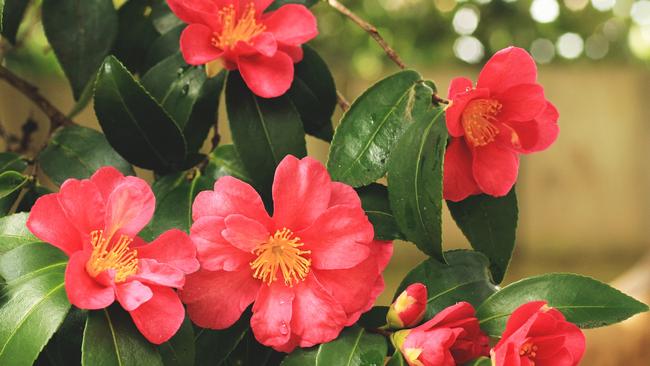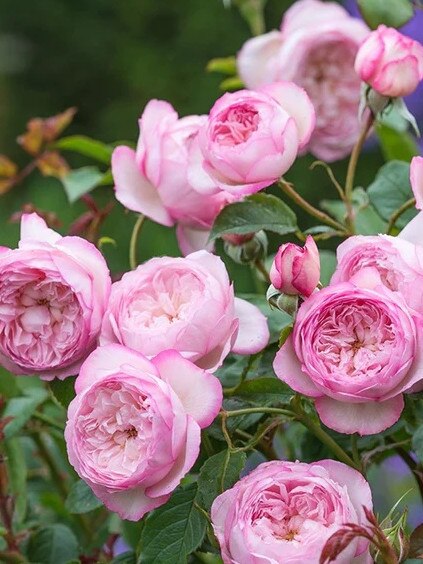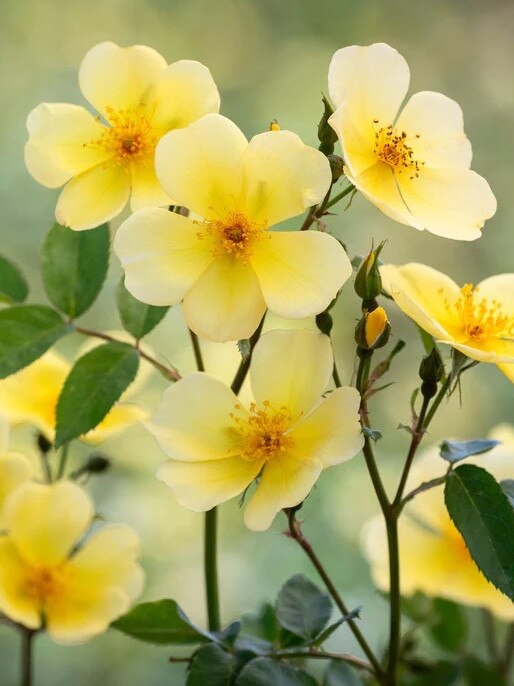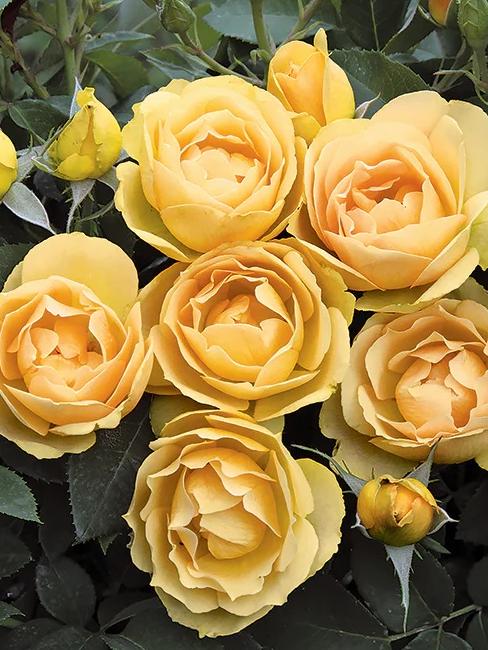Camellias: 200 years in Australian gardens
For 200 years the colourful camellia has bloomed in Australian gardens passing in and out of fashion. It’s time to pay homage to their undeniable influence.

In 1823, the first recorded planting in Australia of camellias took place at the Royal Botanic Garden in Sydney. More arrived in Sydney in 1826 for Alexander Macleay to plant at Elizabeth Bay House, and William Macarthur had a shipment delivered in 1831 to plant at Camden Park. He started a nursery and raised hundreds of seedlings, creating a legacy with famous varieties such as Aspasia Macarthur, Lady Loch and Margaret Davis. Australia had a camellia boom in the mid-19th century, with one Sydney nursery listing 160 varieties for sale in 1883.
But that had dropped to 16 by 1916. In the 1950s, camellias became popular again and camellia societies were formed. Over the past 200 years many thousands of camellia varieties have been introduced or bred here with significant collections at the Royal Botanic Gardens Melbourne (they hold the National Camellia Collection); Mt Lofty Botanic Garden and Stangate House in South Australia; and EG Waterhouse National Camellia Gardens in Sydney’s south. Sydney’s Royal Botanic Gardens has a range of activities in July to celebrate the 200th anniversary, working with Camellia Ark Australia, an organisation set up to preserve the rare camellias that are fast disappearing from Australian gardens.
4 New Shades
This year’s new-release roses include The Mill on the Floss, a perfumed shrub rose in shades of pink, and Tottering-By-Gently, with sprays of single yellow blooms. Both are David Austin roses.


From Wagner’s Rose Nursery are two Italian roses: Paolo, a gold/apricot, compact floribunda, and Mariangela, a perfumed, multi-petalled white.


-
Q&A
I’ve loved seeing the mighty orange Banksia prionotes of Western Australia on my travels, but when I’ve tried to grow them in Sydney, they fail. Any suggestions?
Dave Hayes, Sydney
West coast banksias enjoy hot, dry summers – humidity and summer rain kills them, coupled with phytophthora root rot. It’s the same for many west coast plants that easterners long to grow. Try planting on mounds of sandy or gravelly, low-phosphorus soil in full sun, or in large terracotta pots. Free airflow and protection from deluges helps. Otherwise, look for plants grafted on to eastern species rootstocks or be content with lovely NSW and Queensland banksias.

I was using Confidor for beetles eating my hibiscus buds but I understand it’s toxic to bees. Would the beneficial nematode you recently recommended for millipedes solve my problem?
Gregory Frazer, Sydney
Biological controls such as those nematodes are specific to certain pests. At bugsforbugs.com.au you’ll see a range of pests and their available predators for sale but not, unfortunately, for hibiscus beetle. To use biological controls you must cease all chemical use; Confidor (and the similar Bug Killa and Conguard) stays inside plants for months, killing good and bad insects. It is toxic to bees. Trap hibiscus beetles in white or yellow plastic containers of water and detergent, placed on the ground under your hibiscus.
My mandarins have always had nice, loose skins but this year they’re so tight it’s difficult to peel them. Why?
D Wendt-Weir, Tamborine Mountain, Queensland
After consulting citrus experts such as Engalls Citrus, the likely answer is that either the tree is dry and stressed, or the issue is weather-related to the late ripening of all citrus this year. Mandarin skins loosen in the last weeks of maturity so they might need longer on the tree.
Submit your questions to helenyoungtwig@gmail.com




To join the conversation, please log in. Don't have an account? Register
Join the conversation, you are commenting as Logout